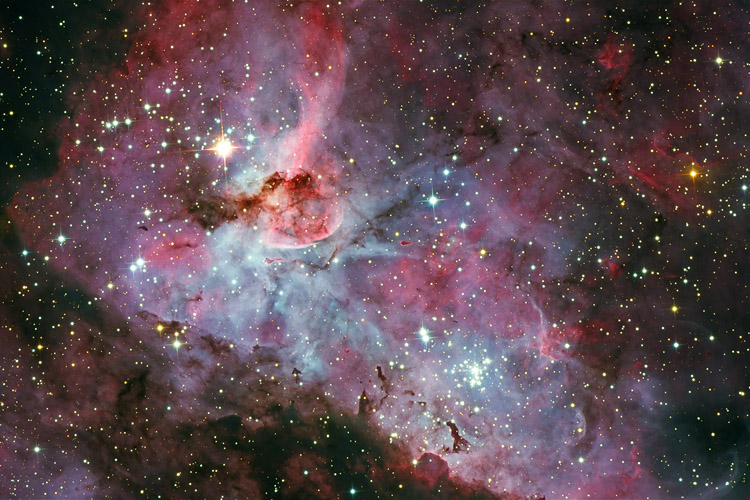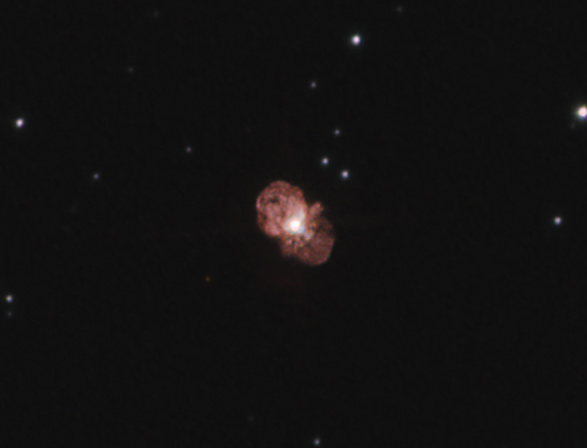
clic here for 48% size 1918 x 1280 (580 kB)
clic here for 48% size 1918 x 1280 (580 kB)
About this Image |
|
|
The super massive star Eta Carinae is embedded in a huge gas and dust cloud. It is situated approx. 7,500 light-years away.
Eta Carinae suffered a giant outburst in the year 1841, when it became one of the brightest stars in the southern sky.
Though the star released as much visible light as a supernova explosion, it survived the outburst.
|

|
|
| Optics |
20 " Keller cassegrain in corrected secondary focus at f/9 |
| Mount | Liebscher GEM |
| Camera | SBIG STL-11000M at -15C, 8-pos STL filter wheel |
| Filters | Baader RGB, Sulphur-II, H-alpha, O-III (7-8 nm) |
| Date | Apr 27, 2008. |
| Location | IAS/Hakos Namibia |
| Sky Conditions | dark skies, raw FWHM 1-1.5" temperature 15 C, |
| Exposure |
R:G:B = 30:30:30 minutes (10-minute sub-exposures);
Homunculus: 15 x 0.5 sec selected frames each RGB color. S-II:Ha:O-III = 120:120:120 min (30-minute sub-exposures); all 1x1. |
| Programs used |
Maxim DL 4.5;
CCDStack Photoshop CS3 |